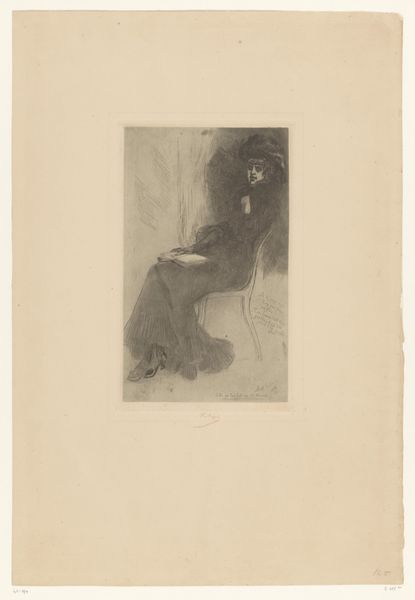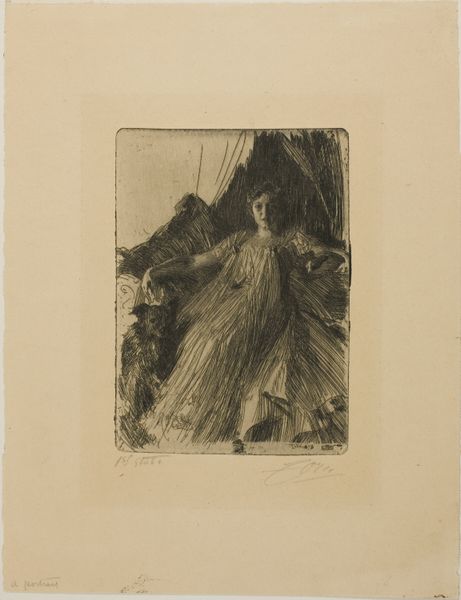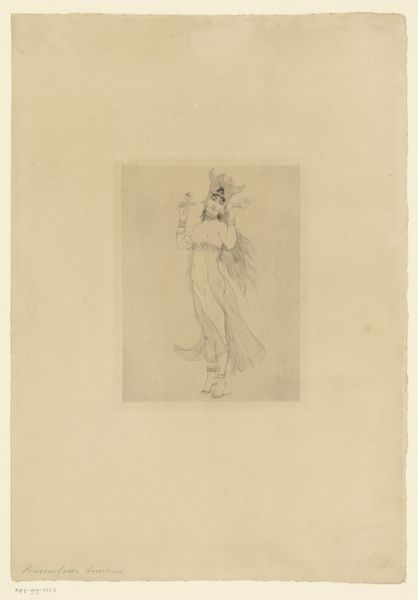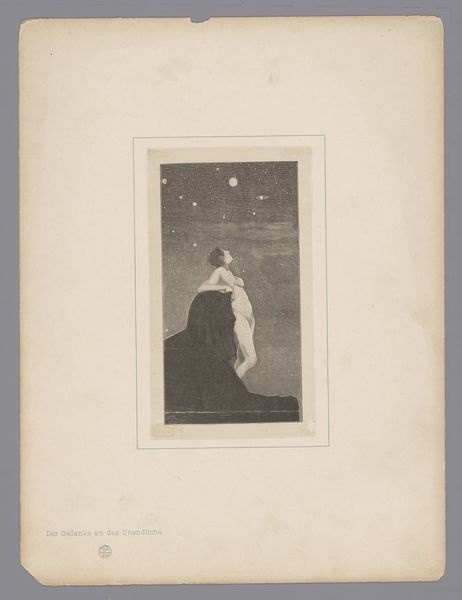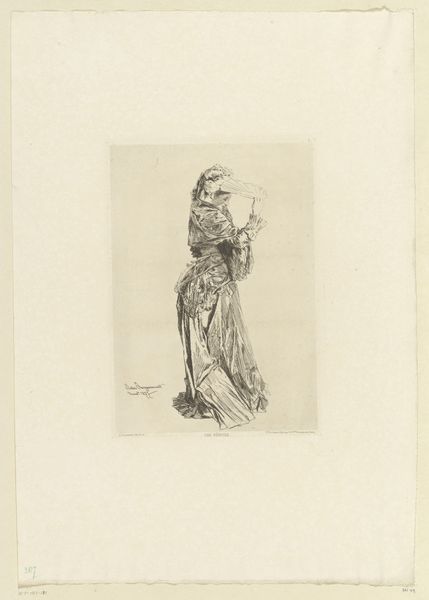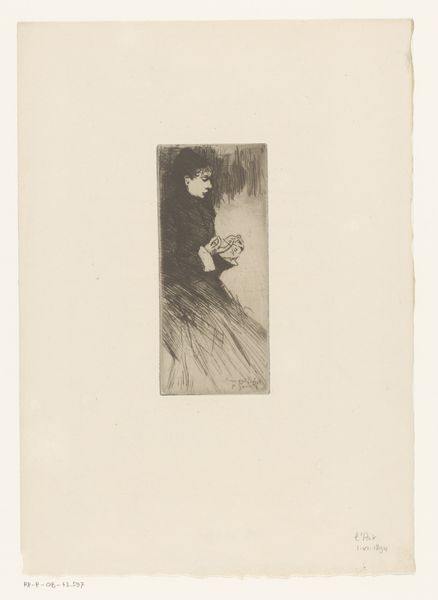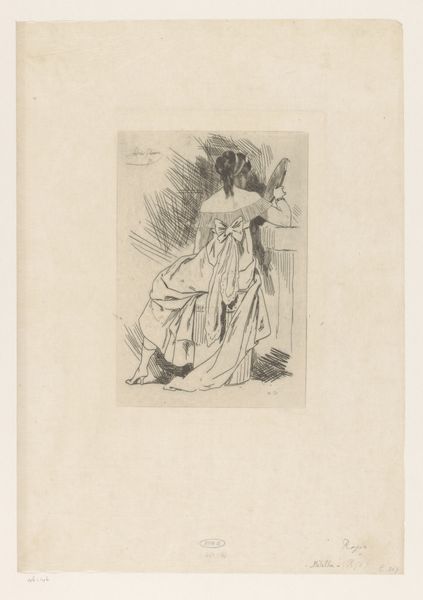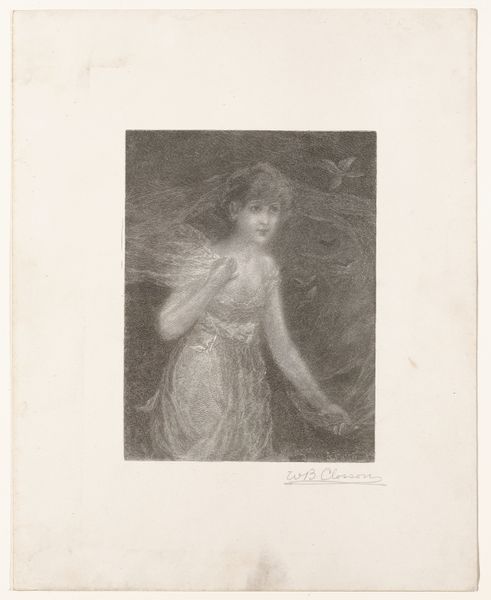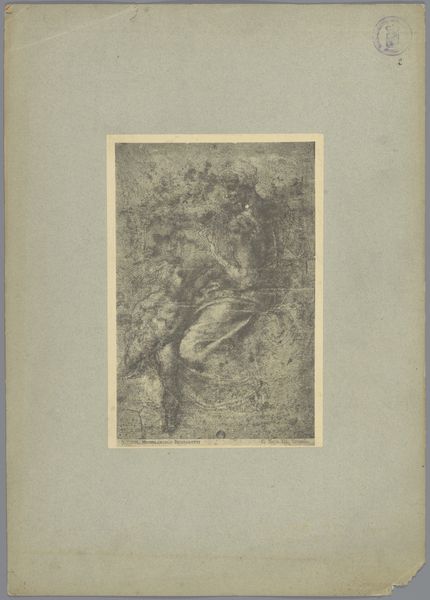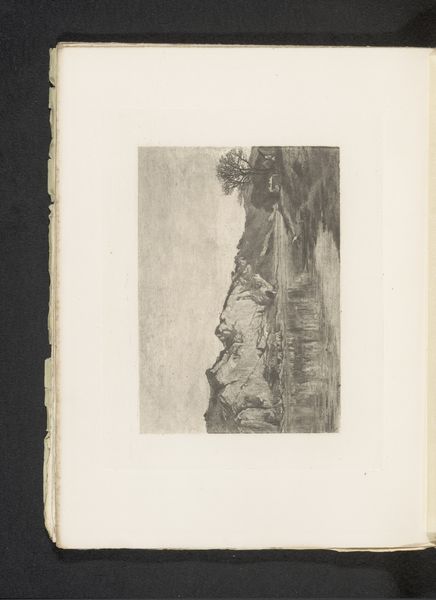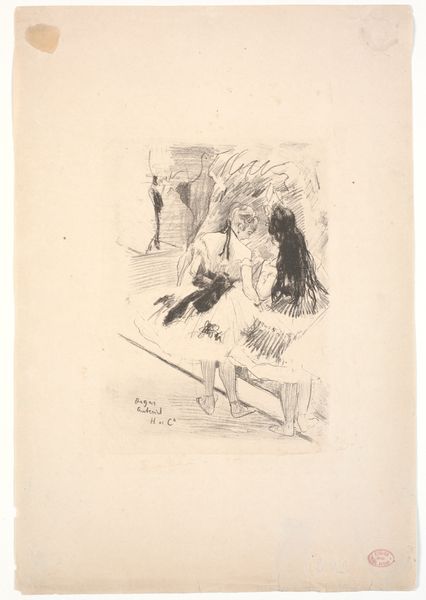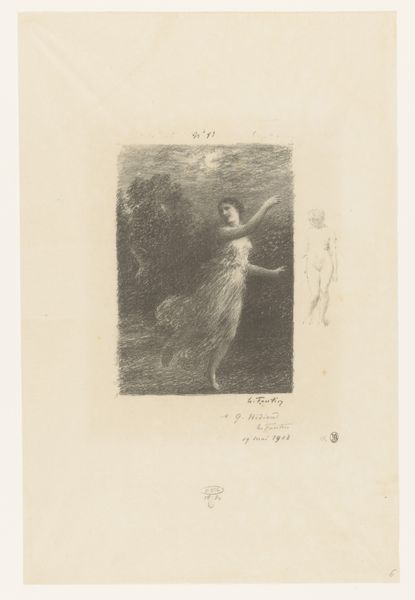
drawing, paper, ink
#
drawing
#
pencil sketch
#
figuration
#
paper
#
ink
#
symbolism
#
nude
Dimensions: height 190 mm, width 130 mm
Copyright: Rijks Museum: Open Domain
Editor: This is "Devil and Eve by the Apple Tree," created in 1897 by Armand Rassenfosse, using ink and pencil on paper. It’s a fascinating image! The way the lines are etched gives it an almost ethereal, yet unsettling mood. What stands out to you? Curator: The medium itself—ink and pencil on paper—immediately frames my understanding. Consider the mass production of paper at the time and how the availability of affordable materials influenced the accessibility of art-making. How does Rassenfosse subvert, or perhaps, reinforce the notions of craft versus fine art by employing these accessible means? Editor: That's a great point. It makes me wonder about the intention. Was he democratizing art, or making a statement about the value – or lack thereof – of accessible materials? Curator: Precisely. And how does this then relate to the subject matter? The biblical Eve, a symbol often interpreted through the lens of morality and social structures. Think about the labour involved in reproducing this image – likely prints were made – and how that distribution impacts the reception and interpretation of the narrative. Are we complicit in a commodification of this 'original sin'? Editor: It seems that he is making a strong statement with these simple tools, almost as if he's giving access to what should remain hidden, playing into that forbidden fruit motif. Curator: Consider, too, the societal role of drawing in late 19th century Belgium. Was Rassenfosse part of any artistic or social movement challenging the existing power structures? We must look at his networks of production and consumption. Who was his intended audience and what message was he trying to sell to them? Editor: I hadn't thought about it that way before. Examining art through its materials and modes of production offers such a deeper, richer understanding. Thank you! Curator: It's crucial to see the art object as a product of material conditions and labour.
Comments
No comments
Be the first to comment and join the conversation on the ultimate creative platform.
